The Ministry of Defence has announced that the Uncrewed Air Systems Heavy Lift Capability (UASHLC) framework has been created “to accelerate the development of a range of autonomous Heavy Lift UAS for use predominantly, but not exclusively, in the maritime domain”.
Last year, the Royal Navy announced that it is developing new approaches to acquire autonomous solutions to support operational activities – such as how to get supplies to the frontline of operations. Royal Naval Air Station Culdrose hosted the inaugural Heavy Lift Challenge, calling on drone manufacturers to showcase crewless technology which could be adapted to carry supplies and cargo to ships and personnel.
According to a tender notice published by the MoD this week.
“The intention is to address the lack of current options in the market by increasing the number of delivery ready platforms in order to help support and develop the Authority’s understanding of the potential capabilities and operational uses for such Uncrewed systems.”
The notice also states that the MoD will “facilitate accelerated development of one or more Supplier UAS to meet or exceed the requirements of Authority defined Minimum Viable Products (MVPs), along with complementary and underpinning technologies that will enhance UAS operational capabilities”.
The notice states:
“Our intent is to ensure that Defence will have access at the speed of relevance, to current and future emerging cutting-edge capabilities for use within the Royal Navy and other domains. The Authority will facilitate, via the use of this competitive framework, an environment whereby suppliers are able to demonstrate current capabilities, set out product development and commercial exploitation roadmaps and work with both the Authority and potentially with other suppliers to accelerate pace of development and reduce time to market.”
The purpose of the UASHLC framework, according to the notice, is to “support and inform the development of Maritime operating concepts and enable assessment, analysis, exploration and evaluation of the use of UAS for beyond visual line of sight (BVLOS) payload delivery and broader UAS capabilities”.
According to the notice, the Framework is designed specifically to:
i) provide Sponsor / User confidence in the potential for UAS systems to provide recoverable, adaptable, Autonomous/remotely piloted air systems, capable of accurately delivering heavy payloads at range;
ii) enable the Authority to identify and as appropriate fund the most viable solutions in the market for accelerated further development in order to meet the Authority’s minimum requirements (the MVPs) within the timescales stated,
iii) provide the Authority with a mechanism for end users to potentially acquire systems for further evaluation or other use.
“The framework is open to all Industry Partners who can articulate how their technology/capability can enhance the Heavy Lift UAS market, thereby not constraining the framework to only Platform providers, as underpinning and novel UAS related technologies and capabilities are also in scope. These underpinning and novel technologies and capabilities can encompass (but aren’t restricted to) payloads, fuels, software, and Counter UAS technologies (ground or platform based). The first tasking within the framework will be based around two confirmed sprints as articulated below, with scope for an additional three sprints as the programme develops (Authority requirement and funding dependent).”
For more on how this fits into the Future Maritime Aviation Force, the excellent NavyLookout has you covered here.


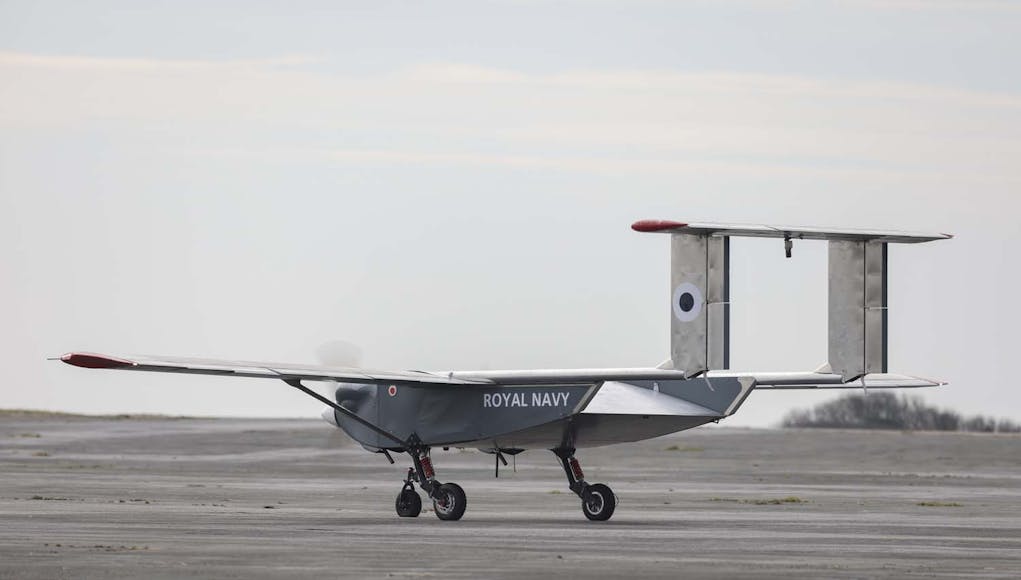

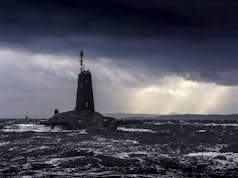
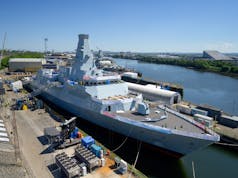

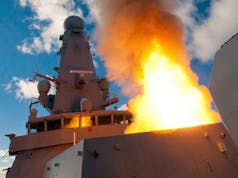



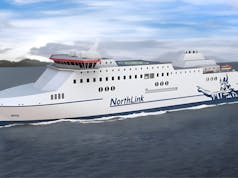

So the question is what do they mean by “Heavy payload” and “at range”. It’s alway good to have an actual measurable outcome to aim at and no weasel words ( although if your outcome is only so many weasel words you can never fail).
The current numbers are:
Maritime Intra-theatre lift (MITL) – MVP 200kg; Stretch 300kg; range MVP 10nM; Stretch 50nM.
Maritime Inter-theatre lift – MVP 75kg; Stretch 125kg; range MVP 300nM; Stretch 550nM
They mean a mail plane, sea vixen is gone and zero hope for anything as large or useful as MQ25 stingray. No plans or hope for anything remotely like a UCAV, nothing in the works for a HALE style UAV despite off the shelf solutions, but the RN is developing a plane that can transfer a whopping 200kg of payload to an aircraft carrier at sea. Seriously what useful payload could you fly with 200KG to a carrier that was 65 million KG. I’m think mail and maybe fresh eggs and milk.
Sea Vixen gone? I thought the RAF Mosquito UCAV was shelved, not Sea Vixen.
My understanding is they are both gone as they were essentially the same aircraft.
https://en.m.wikipedia.org/wiki/Project_Vixen
Seems they projects are directly related but there has been no announcement if Vixen is canceled but seems likely.
Hmmm. A real shame if so.
Probably quite handy for moving valves, circuit boards and other assorted stores and not just mail. That 65 million KG carrier is made up of lots of smaller bits and pieces which are made up of lots ofsmaller bits and pieces. Its also not just about getting stuff on to the carrier, its about being able to move stuff between RFA’s and ships (and hopefully submarines).
I’m not sure why they don’t just pull the trigger on some of the stuff they’ve trialled (unless it was truly awful) and give it a go. It would be a starting point and not an outrageously expensive one I’d have thought. Might be wrong on that point as its guesswork.
Sorry your not selling me on it, we have a need for carrier on board delivery for sure but we need something more like MV22 than this something that can carry an engine not circuit boards. This project just sounds like more pissing around by the RN instead of generating capabilities. Having a drone that can deliver a 200KG payload is more like Amazon prime than a military capability I’m sure it can be useful if anyone runs out of Rum but it’s not going to enable anything we can’t do now.
Let’s be honest the RN has a long history of pissing around with drones when others and adding in capability all the time.
We’re talking about 2 different capabilities here mate. I’m talking about being able to transfer smaller items between vessels on a budget and without having to slow down possibly. There are a number of reasons why you might not to use a RHIB or helo to transfer, sea state, cost etc. Having the capability to bounce around between a TG or even just between 2 units to transfer small kit could be quite handy. That’s a whole different ball game to investing large amounts on Osprey. I’m not against something similar and I suspect in time the UK will get ‘something’ but that’s not really what these drones will be for.
Surely there is a need for both a low cost 200kg+ unmanned transport and a much larger manned or unmanned MV22 Osprey type. The former will obviously open many different uses for payload packages, not all of them simply deadweight delivery. While the later has almost limitless applications. Eventual AEW and inflight refuelling roles being paramount.
At present we have the sensor array of the F35 as a makeshift AEW and the possibility of a buddy buddy inflight refuelling option. Both taking valuable F35 airframes and costly availability hours, away from their primary duties.
It strikes me that the exercise is more than first meets the eye. Lets hope so.
As I said George, I’m not against an Osprey type. That will be a much larger investment than drones though. At the moment the RN doesn’t look like they’re interested in Osprey (maybe down to cost) but they are playing with these drones.
They WOULD be better off contracting out to Amazon! They could get free deliver in 24 hours on some items if it’s <200kg.
You jest but the hardware and software of Amazon drone delivery systems have direct military applications. If nothing else it proves the concept, encourages R&D and brings the costs down. Then there is the Ukrainian postal service version, direct delivery of grenades to the open commanders hatches of MBT’s. How cool is that?
It’s for transfer of items between RFAs and RN ships without having to come alongside and use jackstay replenishment rigs or helicopters to do it. Makes complete sense.
If you think 200kg is something an Amazon drone could deliver then you should give up Imperial measures and start learning metric.
You are completely correct.
The best option, by a huge margin, is the same version of the MV-22 Osprey that the USN now has in service.
The RN is still run by those at the top that lack vision and aptitude and just want to secure their pensions!
We were still using valves in the army till about 1990.
The police forces were using them until Airwave came along, transistors seem to be the thing nowadays.
You did mention circuit boards.
Fair one Dave, I was thinking more hull valves on ships/boats though. If they can get a couple hundred kilos on a ‘helicopter drone’ then that could be really useful for a lot of smaller platforms.
I have had one ale, that is as witty as I get, down hill from here.
Well I still have valves in my Fender amps but the previous manufacturers like Mullard disappeared decades ago. For years the main source was Sovtech (no prizes for guessing where they came from) because the relevant military were the only ones still into valve technology.
Indeed, the vhf transmitters that UK police comms used before Airwave were a metal valve (I had never seen those before) from the Soviet Union.
It reminds me of that MiG that Balenko bloke landed in Japan …..
Yes I remember the MiG25 – I recall some of the comments made after is was dissected almost along the lines of it being put together with sheets of corrugated iron and a nail gun. But it still did the job and I don’t think the IAF ever succeeded in shooting one down when they carried out recce missions over Israel.
Valves, virtually EMP proof.
Method in the MADness.
I thought that was called a helicopter!
Or are Wildcats and Merlins unable, again?
It cost a lot of money to put a paraffin parrot up, there is also hours on the air frame etc. If you can get a smaller and cheaper ‘unit’ to do it then why wouldn’t you. You could use a RHIB but they are people intensive and sea state dependent. Get with the new world man, if it’s good enough for Amazon….
Plenty of stuff that is less than 200kg and if it goes TU needs replacing. Sea valves, GT parts, radar components, CCt boards plus whatever F35 has thats off the top of my head.
OK your not going to move a F35 engine but there is plenty of other smaller but critical ship stopper kit.
Mail? Really?…”Mail Call Mail Call Messdeck 4″ ( Remember that recruiting ad?) is not what it was…. Most personal mail comes in over email. Official mail OK but again a lot of that is electronic.
You are speculating, the RAF requirement has not ‘gone’ the Mosquito design was going to take too long to develop so they canned it in favour of a wider competition for a more rapidly aquired capability which will be unveiled in the Autumn. Sometimes it makes sense to stop a programme early if is not going to deliver.
True however we are talking about a service that’s continuously canned drones beyond MQ9. Hopefully they get something sorted but I can imagine being in the same space twenty years from now with nothing to show but more power points and canceled research programs with four letter abbreviations.
They’ve just spent £100m on a HALE assessment over the next three years. Project Aether is testing stratosphere ballons from Sierra Nevada Corporation in the US.
It is not to enter service though I believe, just to “support the authorities understanding”
In other words, always further in the future.
Like all the other trials over the last decade and more.
It is getting frustrating! They seem terrified of actually ordering something.
And if the tech changes so fast procurement can not keep up, will it ever?
Spot on no one wants to be responsible for what will later be deemed a bad ( and expensive as the media will tell us) decision. Waiting for a perfect so.Union usually ensures that mind so to me best to start at the basics use them in a limited fashion in realistic conditions/service and through that determine where and how quickly to develop the next stage/vehicles/requirements.
I share your frustration, but it’s more than supporting understanding. Another product capable of reaching a low entry level could be invested in to help it reach the MVP required targets. The previous two favourites, Malloy T-600 and Windracers Ultra, were each given £300K to develop their drones, and it looks like the navy want more breadth in the market.
I suppose they aren’t happy choosing from these two. I don’t think the Malloy had the range for MILT (the range it managed was missing from the reports in April), and there was talk about a joint product between Malloy and BAE on the T-650. As far as I can tell, Windracers exceeded the MVP weight and range for the inter-theatre role, so why they aren’t going with it is finger-in-the-air speculation.
Then there’s the new Leonardo rotary under development, which will be easily capable of hitting the MILT requirements, but might be thought too expensive to use for purpose.
You are clearly well ahead of me in understanding this area Jon, thanks for those details.
Yes, I do find it frustrating.
At the risk of frustrating you more, there was an urgent operational requirement in 2020 to deploy the FTUAS rotary (flexible tactical) in the Gulf by this year — basically only Camcopter, AWHero or Skeldar fit, so how hard is it to pick one? But the tumbleweeds keep rolling.
Let’s be honest they never go with anything they just keep pissing money around to generate power points with the occasional trial of something off the shelf like scan Eagle that then gets quietly dropped again. 6 months ago we were looking at a fleet of UCAV/loyal wingman drones making up the numbers on the Queen Elizabeth class and now we are looking at maybe Amazon prime deliveries to the carrier.
Maybe drones need their own force like the air force because clearly the people in charge at the moment are incapable of supporting or funding them properly.
I think we still are looking at carrier-based loyal wingmen. I don’t believe project Vixen is dead. It needs restarting a different way. The issue is lack of budget and doing it on the cheap. When was it ever otherwise?
It will be interesting to see what the RAF Rapid Capabilities Office have for the Mosquito replacement. I doubt it will be a path to Vixen anymore, and the Royal Navy’s OCTO (oddly enough, headed by a Brigadier) will have to actually get proactive.
Scan Eagle…Needed Civvie operators onboard . Had a massive footprint with all of the launch/recovery and handling equipment. Took the flight deck out of use ( Black deck) during launch and recovery so no helo ops. Also needed a major aerial fit to control and receive the data from it. There are better ways of doing what Scan Eagle did as tech has moved on somewhat.
”Le mieux est l’ennemi du bien”
I had to look that up!!!
It’s a quote from Voltaire, but is interestingly a seminal though that guides modern Quality Improvement theory, so the 80/20 rule….the first 80% of any improvement or work is actually achievable with only around 20% of the total effort or resources expended and can make a difference, but if you aim for 100% perfection that last 20% will kill your project as it will eat up four times the resources and time of achieving 80% ( it’s the problem the army seem to have all the time…just add that as well….then it’s all broken).its called Parento principle. The NHS lives and dies by it as we are mired in a moral need to achieve 100% ( we cannot just say well we will only try and prevent 80% of preventable deaths). One of my jobs is to see where I can actually use the 80/20 rule, so I love Voltaire.
Thanks for that explanation Jonathan.
An Osprey is far too heavy for most ships helipads.
Osprey is not the answer for everything. This is for all the smaller stuff. The navy will know what are the most delivered items that ships need and how often.
So any task fleet will have an RFA ship to deliver any heavy stuff.
You don’t want a billion pound new fleet of aircraft just to deliver post and apples once a week.
Well I need to attend a course in gobbledygook as I’ve read it about 4 times and still don’t have a clue what’s been ordered.
It is a “framework”. You know 3 planks of wood nailed together in a A shape.
As others have posted we never seem to get off a ppt and spin, nothing actually concrete.
Just pick one and make do with it – spend a bit of money on a small set of UAVs and stop looking for the perfect solution. Then take it on from there. And make bigger and better better something and not nothing.
Don’t get why we don’t have dozens of Schiebel S100 by now you get 2 per small container.
Maybe something will come sometime If that something does the thing we need sometime.
I’m not sure three planks of wood will ever fly…it needs a programme to develop the three planks of word market and test concepts for delivery.
“still don’t have a clue what’s been ordered.”
Nothing! Not for actual front line use anyway. That is the norm with these things!
So the announcement is we want industry to use there money to make something bespoke for the navy needs and then we might order a couple. Maybe.
If it’s role is just general delivery of non expensive parts in a non combat situations just get what works.
I’m still unsure what they want. Is this a vertical quad copter kind of thing or an actual aircraft with wings. Can battery power go as far as they want?
I think asking big defence firms to deliver what should be a cheap delivery drone is the wrong way to go. To make it worth there while it will be expensive, better going to drone builders already and asking what they can come up with. Sometimes the simple option is the best.
Nor am I.
What ever, after several millions spent I’m sure they’ll move on to something else and another trial.
Here’s something that’s fits the bill and is a serious contender..
https://www.forces.net/usa/kargo-uav-solution-resupplying-troops-and-preventing-life-loss
That’s a nice-looking design for a 1-ton class quadcopter. Why would the MOD give money to an American company to develop something when it’s already giving money to UK companies?
Because we’ve been giving money for 20 years to UK companies for drones for the military, and all we’ve managed to bring to service is watchkeeper. Hardly a great record. Our country doesn’t have the resources to fund programs to fruition as they take too long and government change too often. So it makes sense to let other do it and buy off the shelf. Unless a manufacturer goes it alone like BAE with there concept 1 and 2 drones.
That looks great. The tech is there. Adapting it to operate on ships and all the problems that brings with weather, water, moving decks etc.
Most of the components are available to buy and fit them into an airframe that suits the role.
It’s being developed for the US marines so it should be. The video shows it delivering to remote islands.
I suppose an island is in the sea. Not sure about deck movements😂👍😂😂
Maybe they have done the hard work of going from ship to shore and back again.
A British company should be able to do this easily.
They won’t and haven’t….the RN will only purchase 10-15 max so how is a UK company going to spend millions on RD only to make 10-15.
Any chance of extending the range, making it stealthy at Mach 1 and popping a dozen Hellfires underneath. Then we could get rid of the Lightning! 😎
Brimstone!
Your right. Better option really.
Just remember the harrier took 20years to develop to its fly by wire bad ass jet. The lighting will be the same once block IV is rolled out. Spear 3 meteor and possibly NSM under wings will make it a potent plane.
Umh..I think you’ll find I was joking. 😏
More money spent on something that is guaranteed to not deliver anything of use.
Having read through the notice it didn’t seem especially tender to me….
Your a hard man! 😬
Not for everything. Why waste aircraft hours when a drone could do some tasks a heavier aircraft is not necessary for.
Problem is the MoD don’t just get on with it and choose something.
Agreed…sometimes just: buy it, use it and when something better comes along think about buying that, works really well, especially for things like drones..where there will always be a better one next year.